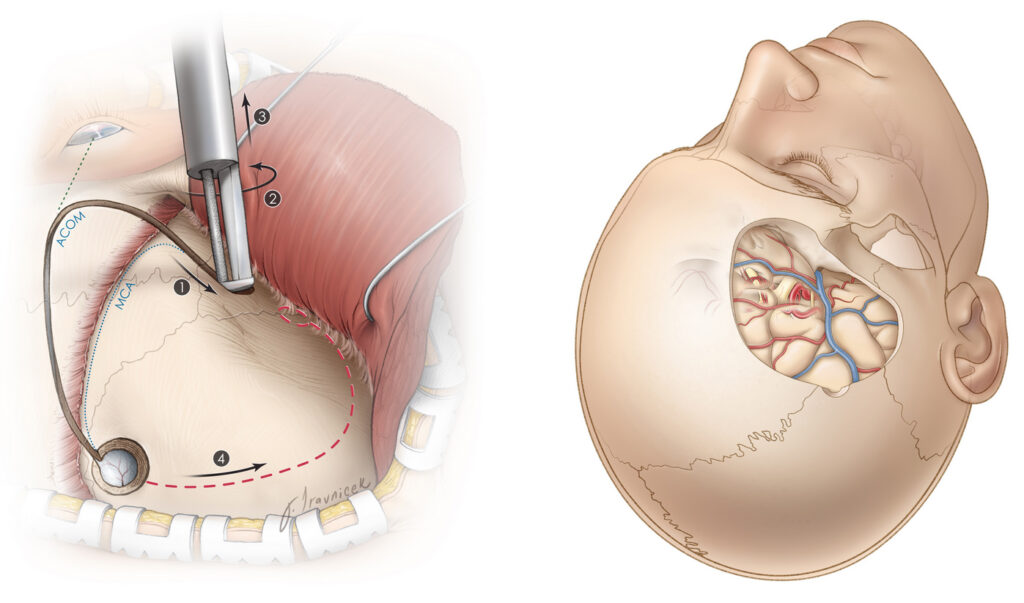Craniotomy Surgery

Craniotomy Surgery
Contact Us
Related Videos :
Frequently Asked Questions :
1. Is craniotomy a risky procedure?
Craniotomy carries risks like any major surgery, but Dr. Suraj Munjal takes all precautions to minimize these risks and ensure patient safety.
2. How long does craniotomy surgery take?
The duration varies based on the specific procedure, but it generally lasts between 2 to 6 hours.
3. What is the recovery time after craniotomy?
Recovery can take several weeks, and patients are advised to follow post-operative care instructions carefully.

About Dr. Sandeep Vaishya
Dr. Sandeep Vaishya is a renowned neurosurgeon with extensive experience in performing craniotomy surgeries. With a commitment to patient care and a deep understanding of complex neurological conditions, Dr. Vaishya employs the latest techniques and technologies to ensure optimal outcomes. His patient-centric approach and dedication to excellence make him a trusted choice for individuals seeking neurosurgical interventions.
What is Craniotomy Surgery?
Craniotomy is a surgical procedure that involves the removal of a portion of the skull to access the brain. This surgery is typically performed to treat various conditions affecting the brain, including tumors, blood clots, and traumatic injuries. The surgery is performed under general anesthesia, and the specific technique may vary based on the underlying condition being treated.
Causes of Craniotomy Surgery
Craniotomy may be necessary for various medical conditions, including:
- Brain Tumors: Both benign and malignant tumors can require surgical intervention.
- Traumatic Brain Injury: Severe injuries that result in bleeding or swelling may necessitate craniotomy.
- Aneurysms: Weak spots in blood vessels that can rupture and cause bleeding in the brain.
- Infections: Abscesses or severe infections in the brain may require surgical drainage.
- Epilepsy: In some cases, craniotomy may be performed to remove areas of the brain that contribute to seizures.
Types of Craniotomy
Craniotomy can be classified into several types based on the specific condition and surgical approach:
- Burr Hole Craniotomy: A minimally invasive technique that involves drilling small holes in the skull.
- Standard Craniotomy: Involves larger skull removal to access deeper brain structures.
- Endoscopic Craniotomy: Uses specialized instruments and cameras for minimally invasive access.
- Hemorrhagic Craniotomy: Focuses on addressing bleeding within the brain.
Symptoms Indicating the Need for Craniotomy
Patients may exhibit various symptoms that suggest the need for craniotomy, such as:
- Persistent headaches
- Nausea and vomiting
- Seizures
- Changes in vision or speech
- Weakness or numbness in limbs
- Altered consciousness or confusion
Diagnosis
Diagnosis of the conditions requiring craniotomy typically involves:
- Medical History and Physical Examination: Assessing symptoms and neurological function.
- Imaging Studies: MRI and CT scans are crucial for visualizing brain structures and identifying abnormalities.
- Neurological Tests: Assessing cognitive function, reflexes, and sensory responses.
Treatment Procedure
The craniotomy procedure involves several steps:
- Preoperative Preparation: Patients undergo evaluations and consultations.
- Anesthesia Administration: General anesthesia is provided for patient comfort.
- Surgical Access: A portion of the skull is removed to access the brain.
- Treatment of the Condition: The underlying issue, such as tumor removal or blood clot evacuation, is addressed.
- Closure: The skull piece is replaced and secured, and the incision is closed with sutures.
Cost of Treatment and Stay in India
The cost of craniotomy surgery in India can vary widely based on factors such as:
- Type of Surgery: Different techniques may have different costs.
- Hospital Facility: Renowned hospitals may charge more for advanced care.
- Location: Costs may differ based on the city and region.